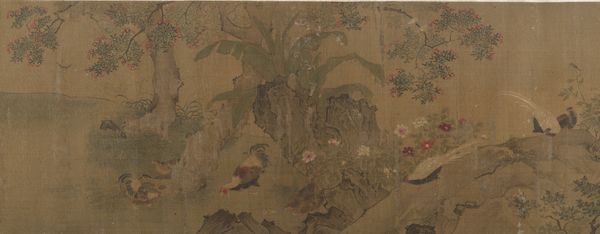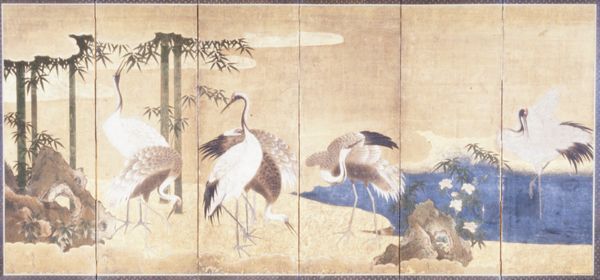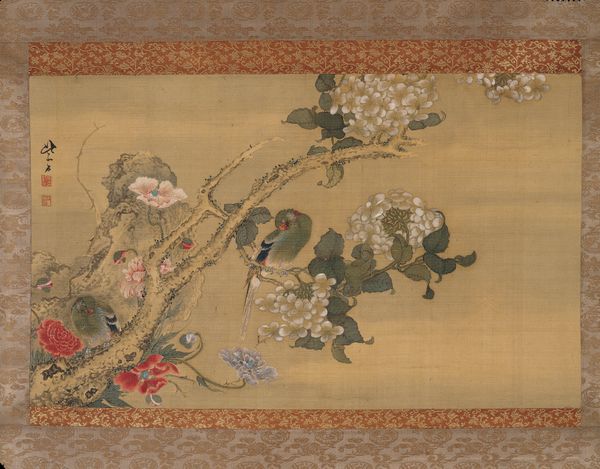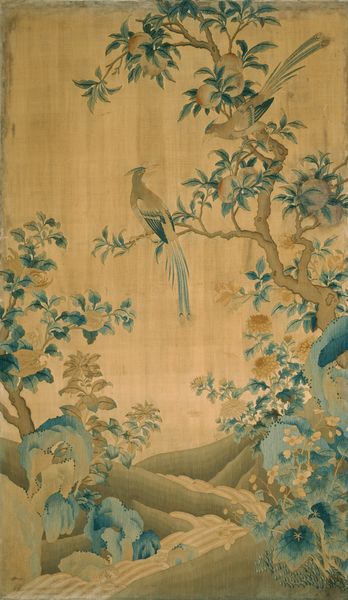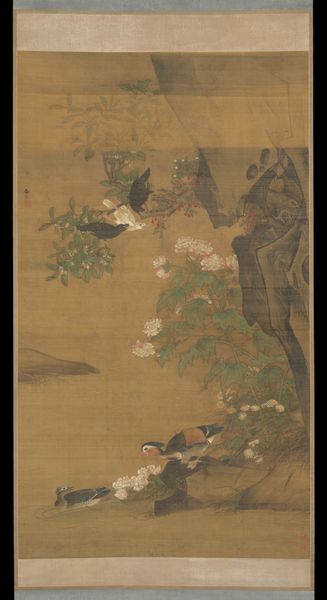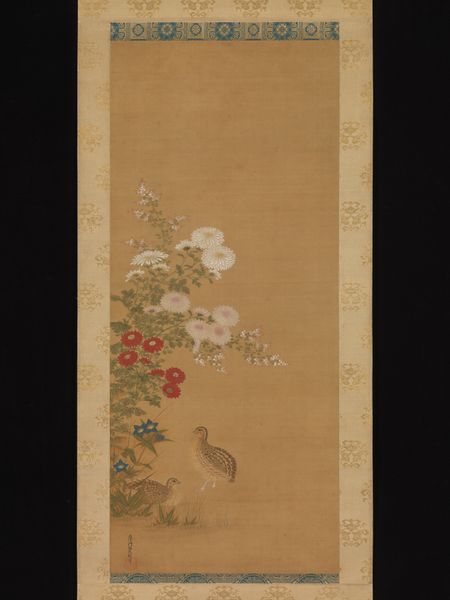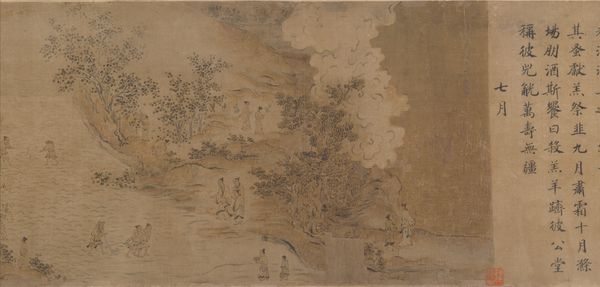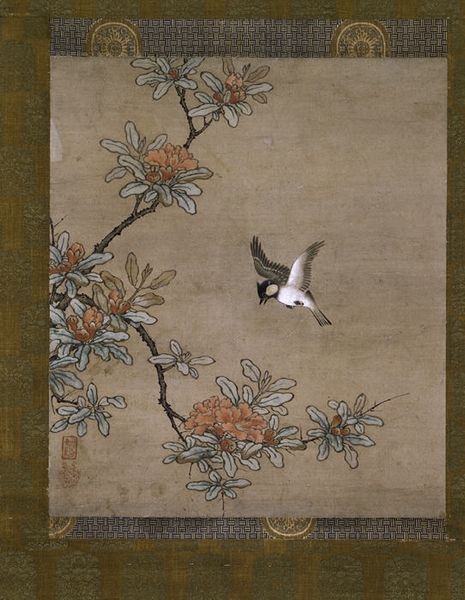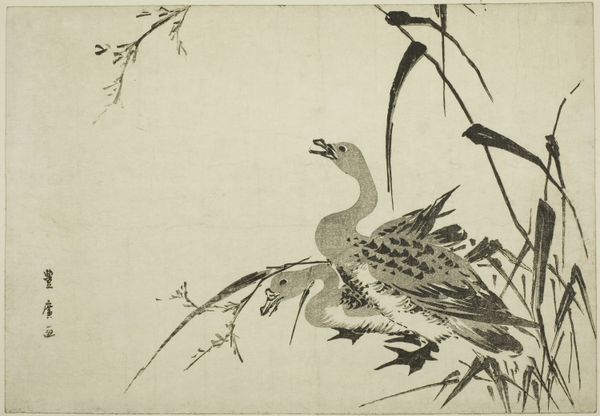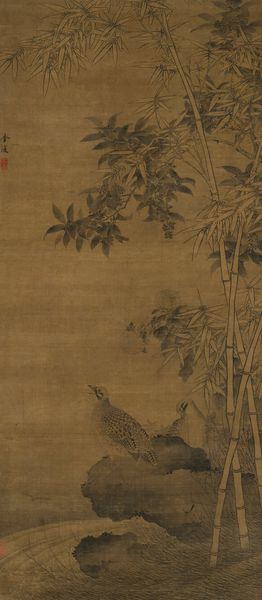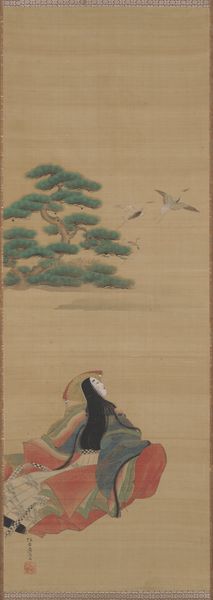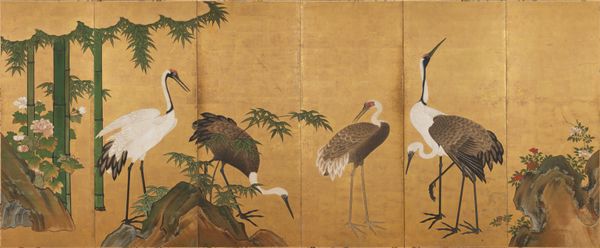
painting, ink
#
painting
#
asian-art
#
landscape
#
ukiyo-e
#
ink
#
realism
Dimensions: 77 × 96 cm (30 1/4 × 37 3/4 in.)
Copyright: Public Domain
Curator: This artwork is titled "Geese on a Riverbank." It's attributed to the artist Shen Kai, possibly created between 1644 and 1911, rendered with ink on painting. Editor: It's remarkably subdued. The colors are muted, almost monochromatic. The composition feels quite deliberate. There’s a certain stillness that settles over you. Curator: Precisely. Consider the artist’s meticulous brushwork. The gradations of ink wash create depth and texture, defining the forms of the geese, the foliage. Note the precise yet delicate lines that suggest every feather and leaf. It reflects traditional landscape painting, with its refined representation. Editor: While the composition shows incredible mastery of line and form, I’m immediately drawn to what this scene represents on a deeper level. The geese, traditionally symbols of fidelity and marital harmony, are placed within this ambiguous landscape. Are they isolated, or are they a part of a greater social ecology? It is difficult to avoid the long tradition of geopolitical upheaval in China through that period, and wonder how those political events could have touched Kai and shaped his decision to center his attention on an isolated landscape. Curator: An intriguing proposition. Viewing it through a symbolic lens indeed opens possibilities. I still contend we can’t dismiss the formal interplay of positive and negative space—the balance it creates—and how that alone impacts our viewing experience. Look how the empty space around the geese draws the eye, a masterful play with void as form. Editor: But doesn’t that formal emptiness also invite projections, prompting reflections on nature’s vulnerability and our human place within that? Also, if we look at the representation of flora, aren’t we reminded of idealized representations of a feminine ideal? Curator: That’s insightful. There’s always that push-pull in how we respond. To only see the work as structure or form neglects its possible engagement with life. Still, consider how each element contributes to the overall harmony. It's this visual integration that first captivates. Editor: I concur about harmony. I guess seeing the world of suffering outside the canvas always moves me to imagine how artworks echo experiences in a broader field. Curator: Yes, whether exploring form or meaning, art invites infinite observation. Editor: True—there’s always more than meets the eye in a composition as deceptively simple as this.
Comments
No comments
Be the first to comment and join the conversation on the ultimate creative platform.

